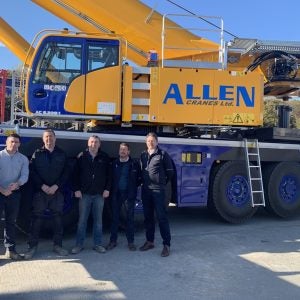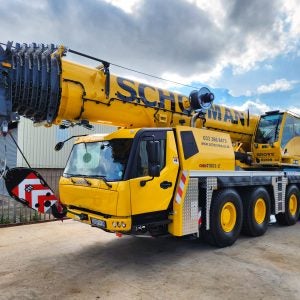After eight years as sales director for mobile harbour cranes at Gottwald Port Technology, and after 35 years in the crane business, Heinz Hinrichs is retiring on 30 June 2003. He is succeeded by his deputy, Giuseppe Di Lisa.
During Hinrichs’ time as sales director for Gottwald’s most successful product line, worldwide demand for Mobile Harbour Cranes grew steadily from around 50 units in 1995 to 140 in 2002.
“In 2002, Gottwald sold 66 cranes. This fact alone underscores the company’s leading position in the Mobile Harbour Crane sector”, said Hinrichs.
Giuseppe Di Lisa joined Gottwald in 2001 as deputy sales director. He is a 38 year-old Italian who grew up in Germany. Until taking up his new post, he had been in charge of the North American market. Before joining Gottwald, he had already gained experience in the port technology industry after working eight years for Kranservice Rheinberg (KSR), a subsidiary of Gottwald’s sister company, Demag Cranes & Components.
Di Lisa said: “The change in Gottwald’s sales organisation leadership ensures the continuation of our commitment to customers and partners. Heinz Hinrichs personally introduced me not only to Gottwald’s more than 30 sales representatives, but also to many customers around the world.
“When visiting our customers all over the world we always made very clear that we will continue the positive customer relationships Heinz Hinrichs has developed in the past decade. Mr Hinrichs has passed on his knowledge to me and I would like to thank him for his efforts and advice. There is no doubt that I will pursue the same market approach. In addition, it is Gottwald’s and my aim to penetrate new market segments more aggressively for Mobile Harbour Cranes, such as the market for bulk handling equipment with our comprehensive four-rope grab crane product line for professional bulk handling up to 1,500 tonnes per hour.
“Furthermore, I plan to implement more training for our sales representatives around the globe to make them more familiar with the company’s new ideas, products and services, on the one hand, and to intensify communication with those people who are on-site to listen to the ‘voice of the customer’ to learn more about customer requirements and concerns, on the other.”






